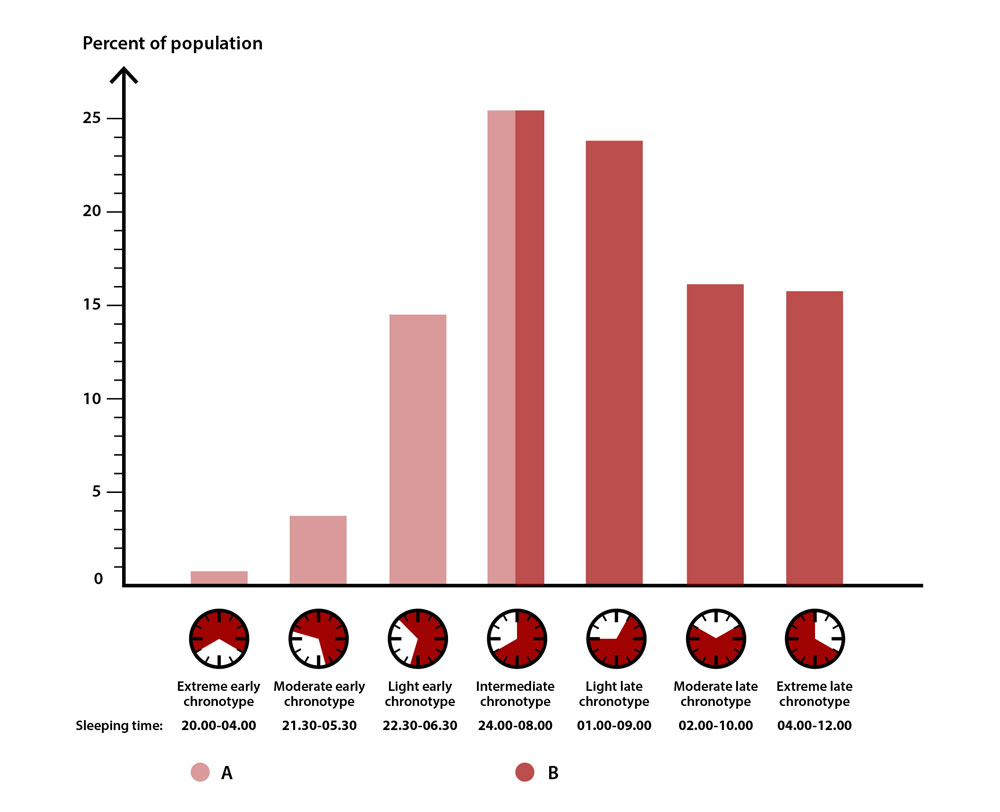7 chronotypes
Professor Till Roenneberg, a leading researcher on chronobiology at Ludwig Maximilian University of Munich, has mapped the circadian rhythms of more than 300,000 people (Roenneberg, 2012). The distribution of circadian rhythms (chronotypes) ranges from people rising extremely early (early chronotypes) to people going to bed extremely late (late chronotypes), just as human beings range from very tall to very short.

“Note: Sleeping times are with a need for sleep of 8 hours”
- Extreme early chronotypes: 0.8%
- Moderate early chronotypes: 3.7%
- Light early chronotypes: 14.4%
- Intermediate chronotypes: 25.4%
- Light late chronotypes: 23.9%
- Moderate late chronotypes: 16.1%
- Extreme late chronotypes: 15.7%
About a fifth of the world’s population is categorized as A-person, while just over half are categorized as B-person. Approximately one in four are in the intermediate category, which is neither early or late chronotype. As many as 83 percent of the world’s population — in Europe, the United States and Asia – are awakened by an alarm clock to go to work or school. Late chronotypes often get too little sleep on working days — falling asleep late, but needing to meet early in the morning — and in turn sleeping more on days off. Late chronotypes may have to push a sleep pressure in front of them, and therefore need to sleep several extra hours on the weekend. Unfortunately, having too little sleep on working days has a health cost — week after week, year after year.
